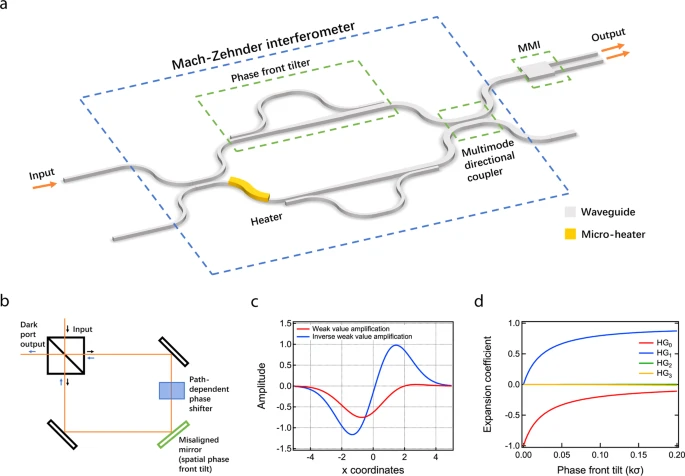Phys.org November 12, 2021
Based on a theory of weak value amplification with waveguides, a team of researchers in the US (University of Rochester, industry, Chapman University) has packaged an experimental way of amplifying interferometric signals—without a corresponding increase in noise —on a 1 mm by 1 mm integrated photonic chip. Weak value amplification is based on the quantum mechanics of light, and basically involves directing only certain photons that contain the information needed, to a detector. They distilled all of this and put it into a photonic chip. The device removes that limitation of traditional interferometers by reaching the same interferometer signal with less light at the detectors, which leaves room to increase the signal to noise ratio by continuing to add laser power resulting in a better signal to noise ratio. Having the interferometer on a chip, makes it possible to put it on a rocket, a helicopter, or a phone and it will never be misaligned. Their results pave the way for a more sensitive, robust, and compact platform for measuring phase, which can be adapted to fields such as coherent communications and the quantum domain…read more. Open Access TECHNICAL ARTICLE

Device schematic and free space weak value amplification. Credit: Nature Communications volume 12, Article number: 6247 (2021)